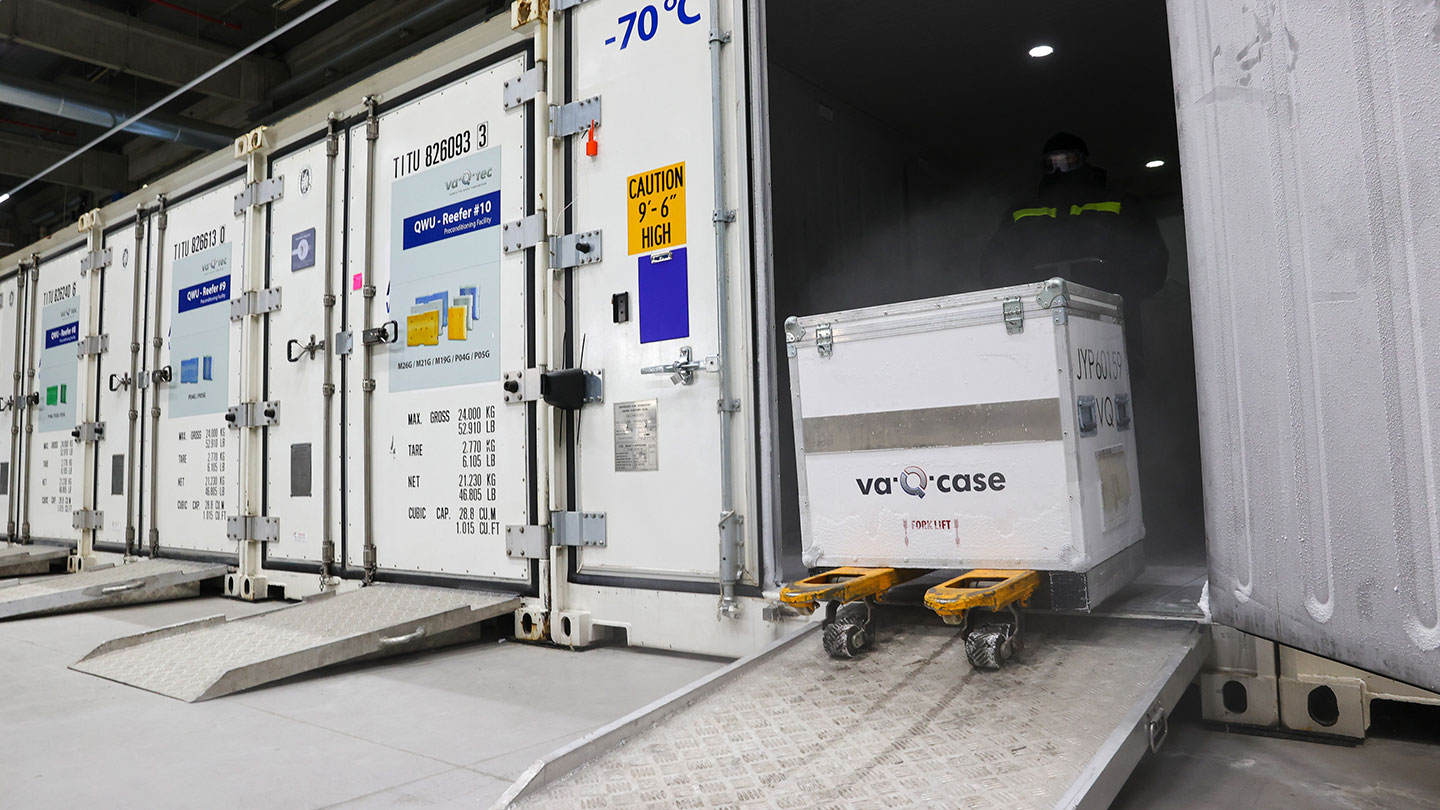Event News
Why Do the COVID-19 Vaccines Need to be Kept So Cold?

Some students studying to get a bachelor’s or master’s degree in biotechnology might be asking why Covid-19 vaccines need to be kept at such low temperatures. Here’s why:
The two COVID-19 vaccines (Moderna and Pfizer-BioNTech’s) that have been approved need extremely low temperatures to stay viable, but this isn’t uncommon. Most vaccines are held between -50°C and 7.8°C, according to the Pan American Health Organization, a specialist international health agency for the Americas.
To stay effective, Pfizer’s vaccine must be stored and delivered at a freezing temperature of between -80°C and -60°C. At the same time, Moderna’s vaccine is kept between -25°C and -15°C during frozen transportation and between 2°C and 8°C during refrigerated transportation.
Certain elements could degrade if these temperatures are not preserved in the cold chain, rendering the vaccine useless. Vaccines will only come out of the deep freeze at the end of the journey when they’re thawed and ready to be administered.
Covid-19 vaccines’ transportation and storage is a huge and expensive undertaking. Both Moderna and Pfizer-BioNTech’s vaccines, which the Food and Drug Administration has given Emergency Use Authorization in the US, must be held at subzero temperatures before they hit their destinations. Even a little logistical snag could stymie immunization efforts.
So, why do Covid-19 vaccines need to be shipped and stored at extremely cold temperatures?
The type of Covid-19 vaccines approved for use in the US is the mRNA (Messenger Ribonucleic Acid) vaccine. The instability of RNA (ribonucleic acid) is well-known. Before working with RNA in the lab, it’s normal for scientists to clean their workspace of “RNases,” or ubiquitous environmental enzymes that quickly break down RNA.
RNA is single-stranded and contains ribose (hence “RNA”), while DNA has two strands and includes a submolecule called deoxyribose (hence “DNA”). This makes RNA molecules more vulnerable to degradation. Despite the chemical changes and packaging used by these companies to make it more resistant, it nevertheless falls short of DNA or protein in terms of tolerance.
Extreme temperatures delay chemical and enzymatic degradation, ensuring that RNA vaccines’ effectiveness is preserved from manufacturing to injection. Since several RNA copies are transcribed from DNA templates, which are then used to produce proteins, RNA’s instability is beneficial to our cells. However, as the cell’s necessary proteins are formed, the instructions are degraded.

These temperatures are determined by measuring the vaccine at a variety of temperatures and storage durations. Protein vaccines, on the other hand, have their own set of requirements. Though they’re usually kept in the fridge, freezing them will denature the proteins and make them useless.
Using mRNA (messenger ribonucleic acid) technology has been critical in creating a safe, effective vaccine in such a short amount of time. Still, mRNA is highly fragile and easily broken down. Because of mRNA’s inherent volatility, creating an mRNA-based vaccine has been difficult in the past. Furthermore, the biological material used to package the mRNA to be administered as a vaccine is unstable.
Fortunately, a great deal of effort has gone into improving methods and technology to make mRNA more stable, allowing it to be effectively integrated into a vaccine. Nonetheless, cold storage will be needed for the first two COVID-19 mRNA vaccines to ensure that the mRNA inside these vaccines remains stable.
Transporting Covid-19 Vaccines
Air freights and other modes of transportation play a vital role in delivering Covid-19 vaccines across borders. However, they require well-established temperature-sensitive distribution systems and cutting-edge technology and procedures.
This capacity will be critical in ensuring the timely and effective delivery of COVID-19 vaccines. This will, of course, necessitate meticulous preparation on the part of every section of the cargo supply chain to ensure total readiness.
Vaccines must be treated and shipped under international regulatory and manufacturer standards, at regulated temperatures, and without delay, to ensure product consistency.

Final Note
Throughout the cold chain, from packaging to delivery, Covid-19 vaccines are kept at extremely low temperatures to ensure that the mRNA content remains stable and effective when administered.
For those who study a Bachelor of Biotechnology or Master in Biotechnology, the points discussed above should be easy to understand.
We hope this post gives you a good idea of why the COVID-19 vaccines need to be kept at such a low temperature.

